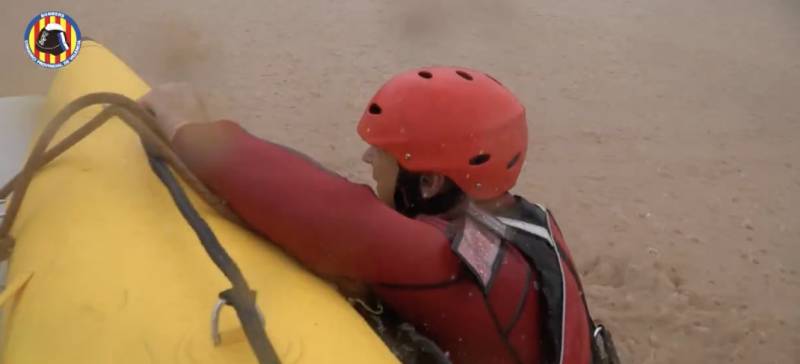- Region
- Águilas
- Alhama de Murcia
- Jumilla
- Lorca
- Los Alcázares
- Mazarrón
- San Javier
-
ALL AREAS & TOWNS
- AREAS
- SOUTH WEST
- MAR MENOR
- MURCIA CITY & CENTRAL
- NORTH & NORTH WEST
- TOWNS
- Abanilla
- Abarán
- Aguilas
- Alamillo
- Alcantarilla
- Aledo
- Alhama de Murcia
- Archena
- Balsicas
- Blanca
- Bolnuevo
- Bullas
- Cañadas del Romero
- Cabo de Palos
- Calasparra
- Camping Bolnuevo
- Campo De Ricote
- Camposol
- Canada De La Lena
- Caravaca de la Cruz
- Cartagena
- Cehegin
- Ceuti
- Cieza
- Condado de Alhama
- Corvera
- Costa Cálida
- Cuevas De Almanzora
- Cuevas de Reyllo
- El Carmoli
- El Mojon
- El Molino (Puerto Lumbreras)
- El Pareton / Cantareros
- El Raso
- El Valle Golf Resort
- Fortuna
- Fuente Alamo
- Hacienda del Alamo Golf Resort
- Hacienda Riquelme Golf Resort
- Isla Plana
- Islas Menores & Mar de Cristal
- Jumilla
- La Azohia
- La Charca
- La Manga Club
- La Manga del Mar Menor
- La Pinilla
- La Puebla
- La Torre
- La Torre Golf Resort
- La Unión
- Las Palas
- Las Ramblas
- Las Ramblas Golf
- Las Torres de Cotillas
- Leiva
- Librilla
- Lo Pagan
- Lo Santiago
- Lorca
- Lorquí
- Los Alcázares
- Los Balcones
- Los Belones
- Los Canovas
- Los Nietos
- Los Perez (Tallante)
- Los Urrutias
- Los Ventorrillos
- Mar De Cristal
- Mar Menor
- Mar Menor Golf Resort
- Mazarrón
- Mazarrón Country Club
- Molina de Segura
- Moratalla
- Mula
- Murcia City
- Murcia Property
- Pareton
- Peraleja Golf Resort
- Perin
- Pilar de la Horadada
- Pinar de Campoverde
- Pinoso
- Playa Honda
- Playa Honda / Playa Paraíso
- Pliego
- Portmán
- Pozo Estrecho
- Puerto de Mazarrón
- Puerto Lumbreras
- Puntas De Calnegre
- Region of Murcia
- Ricote
- Roda Golf Resort
- Roldan
- Roldan and Lo Ferro
- San Javier
- San Pedro del Pinatar
- Santiago de la Ribera
- Sierra Espuña
- Sucina
- Tallante
- Terrazas de la Torre Golf Resort
- Torre Pacheco
- Totana
- What's On Weekly Bulletin
- Yecla


- EDITIONS:
 Spanish News Today
Spanish News Today
 Alicante Today
Alicante Today
 Andalucia Today
Andalucia Today
Date Published: 31/10/2024
Are DANAs becoming more dangerous? Yes, and this could only be the beginning
The “gasoline” of low temperatures and the “oxygen” of a warm sea were only missing one ingredient in this week’s storm — the spark

Several years ago, the State Meteorological Agency in Spain, Aemet, decided to replace the term “Gota Fría” (referring to a phenomenon of torrential rains) with the acronym DANA or Depresión Aislada en Niveles Altos (Isolated Depression at High Levels).
The acronym pays tribute to the meteorologist Francisco García Dana, who for more than 30 years was part of the meteorological agency and became head of the Prediction Center of the National Institute of Meteorology.
To better understand this meteorological phenomenon, it is worth analysing the parts that define it.
The word ‘depression’ refers to the decrease in atmospheric pressure in an area as we approach the centre.
High levels relate to the fact that these phenomena form above five kilometres in height.
Finally, we have the isolated condition, undoubtedly one of the key aspects of this type of event. And at the same time one of the most complex.

Our planet has areas that are warmer than others due to solar radiation. Once this is reflected by the planet, it rises again and creates a “fight” with the colder air at high altitudes.
The greater the temperature difference between the two currents, the stronger the wind. As far as DANAs are concerned, there are four main currents that we are concerned with: two cold ones, close to the poles, and two warmer, subtropical ones.
“There are different types of jet streams at different latitudes,” explains Aemet, “the best known of which is the polar jet stream. This is associated with very intense wind peaks, which far exceed 180kmh.”
The jet stream flows from west to east around the Earth and is limited to a belt of mid-latitudes. On its southernmost side, the air is warmer than on the polar side.
When the jet stream – which was originally straight – intensifies, becomes undulated and takes on a very marked north-south component, a process of isolation and strangulation of part of this intense circulation can occur.
These circulations become isolated from the general circulation, move away from the areas of origin and end up closing in on themselves.
This means that in the northern hemisphere there are three zones where storms form: the eastern Atlantic, the eastern Pacific and the coastal areas of China. Fortunately, in all cases they have a “short” life span, usually lasting no more than three days.
The high-speed winds, their location near the sea and the temperature differences that give them life, make these phenomena characterised by intense rainfall.
Therefore, the closer to the sea they occur, the more extreme their effects tend to be, which have been documented for almost 100 years in the Mediterranean.
For several days now, the meteorological models had been predicting a drop in cold air in the upper layers, the same ones mentioned before when talking about the “insulation” of the DANAs.
Where we used to talk about the thermal differences as a driving force, to the cold air of the upper layers we must add the high temperatures of the sea: over the weekend its surface temperature reached 22ºC, more than one degree above normal.
This high temperature has caused this body of water to begin to change its ecosystem.
The warm wind from the sea met the mountains near the coast and as it ascended it encountered the cold currents typical of the DANAs.
The currents remained active for several hours, feeding the phenomenon that became increasingly intense due to the constancy and the thermal amplitudes that were handled in the region.
The big question now is not only whether this can be anticipated, which it can if we take into account sea and upper atmospheric temperatures, but whether this, despite its intensity, will not be as strong as those that will come in the future.
And it’s not a matter of if but when, as the vast majority of serious scientists are in perfect agreement – the climate is changing, extreme weather events are going to become more frequent, and it will create crises such as the one experienced by Spain this week if we are not prepared for it.
For more information, news and what’s on in your area visit our homepage at Spanish News Today
Images: Bombers Consorci VLC
Loading
See more environmental news about Spain:
OR
Sign up for the Spanish News Today Editors Roundup Weekly Bulletin to get a comprehensive email with all the week’s news for Spain, Murcia, Alicante and Andalucía.
Get a sneak peek – here are a few of our recent Subscription Bulletins:
25% Discount Special Offer subscription:
36.95€ for 48 Editor’s Weekly News Roundup bulletins!
Please CLICK THE BUTTON to subscribe.
Contact Murcia Today: Editorial 000 000 000 /
Office 000 000 000





















